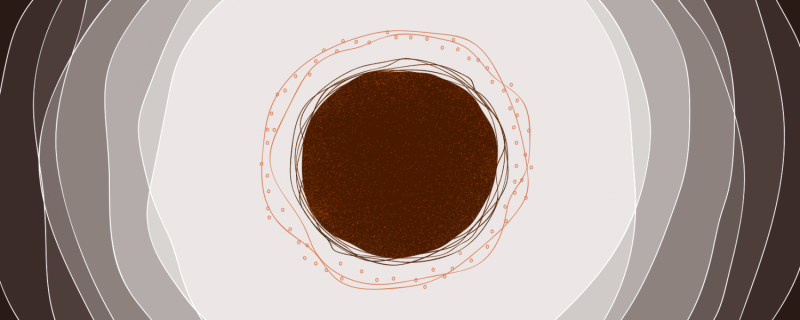Black hole visualization. Credit: Moscow Institute of Physics and Technology
Scientists from Moscow Institute of Physics and Technology, the Institute for Theoretical and Experimental Physics, and the National Research University Higher School of Economics have devised a method of distinguishing black holes from compact massive objects that are externally indistinguishable from one another. The method involves studying the energy spectrum of particles moving in the vicinity, which can be continuous or discrete. The findings have been published in Physical Review D.
Black holes, which were predicted by Einstein's theory of general relativity, have an event horizon – a boundary beyond which nothing, even light, can return to the outside world. The radius of this boundary is called the Schwarzschild radius. In physical terms, it is the radius of an object for which the escape velocity is greater than the speed of light, which means that nothing is able to overcome its gravity.
Black holes of stellar mass are the result of gravitational collapse that occurs when a star exhausts all its thermonuclear fuel and the force of the gas pressure can no longer resist gravity. If the star is massive enough, it collapses to a size smaller than the Schwarzschild radius and turns into a black hole. However, time on the event horizon slows down so much that for an outside observer, the collapsing process almost stops (if a ship falls into a black hole, for example, it will appear to be continually falling toward the horizon to an outside observer). Therefore, all black holes are seen as objects that are eternally collapsing.
Astrophysicists have not yet been able to observe a black hole directly, but there are many objects that are suspected black holes. Most scientists believe that in the centre of our galaxy, there is a supermassive black hole; there are binary systems in which one of the components is most likely a black hole. However, some astrophysicists believe that there may be compact massive objects that fall very slightly short of black hole status; their range is only a little larger than the Schwarzschild radius. From the outside, however, they are not distinguishable from black holes.
Emil Akhmedov, Fedor Popov, and Daniil Kalinov devised a method to distinguish the difference between compact massive objects and collapsing objects.
"We examined the scalar quantum field around a black hole and a compact object and found that around the collapsing object—the black hole—there are no bound states, but around the compact object, there are," explains Fedor Popov, a member of staff at MIPT's Laboratory of High Energy Physics.
He and his colleagues examined the behaviour of scalar particles, which have zero spin—an example could be the Higgs boson—in the vicinity of black holes and massive compact objects. The scientists derived analytical expressions for the energy spectrum of the particles. It was found that near the surface of an ultra-compact star with a radius slightly larger than the Schwarzschild radius there is a "potential hole"—an area of space where particles fall into a gravitational "trap." The spectrum of the particles in the potential hole is discrete, i.e. it has energy values where there are no particles. In simpler terms, the potential hole does not release particles at certain energies, and an empty space is observed in the spectrum.
In the case of a black hole in the vicinity of a Schwarzschild sphere, there are no stationary potentials. As there is a constant process of collapse, the boundary of the "hole" moves away and the energy spectrum is continuous.
"We scatter a beam of particles on the object and observe the spectrum. And we see that if there are no discrete levels in the spectrum, it is a black hole, and if there are, it is a compact object. Although this particular study focused on spinless particles, we can assume that the spectrum of other types of particles would behave in the same way," says Fedor Popov.
He notes that so far, this is only a theoretical study; astronomers do not yet have the means to observe the spectra of particles in the vicinity of potential black holes—but now they are one step closer.
More information: Emil T. Akhmedov et al. Method for distinguishing very compact stellar objects from black holes, Physical Review D (2016). DOI: 10.1103/PhysRevD.93.064006
Journal information: Physical Review D
Provided by Moscow Institute of Physics and Technology
























